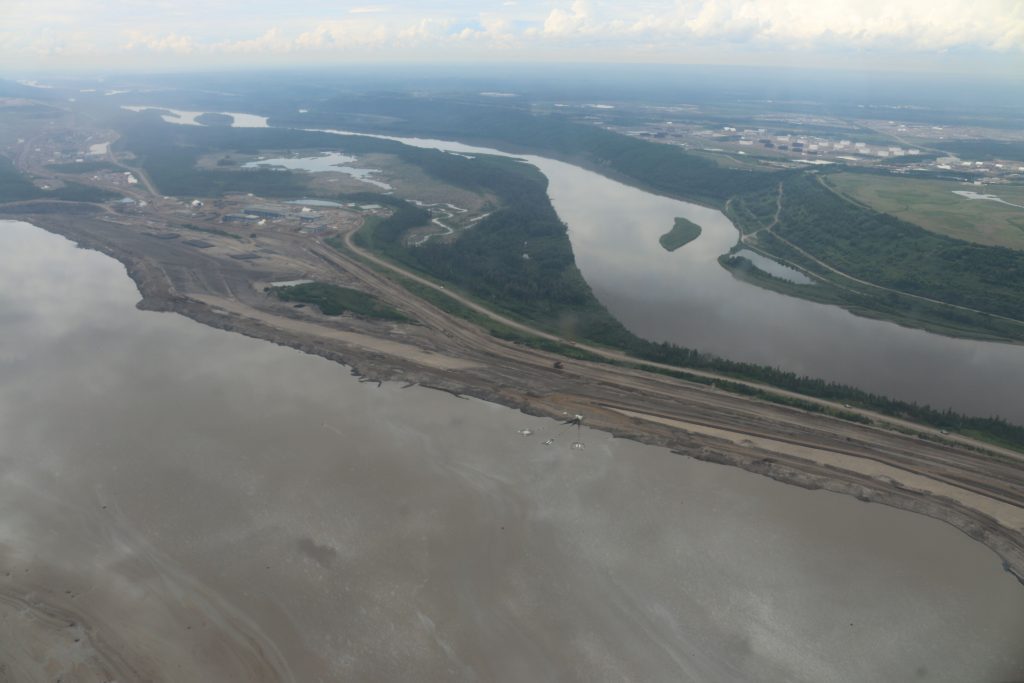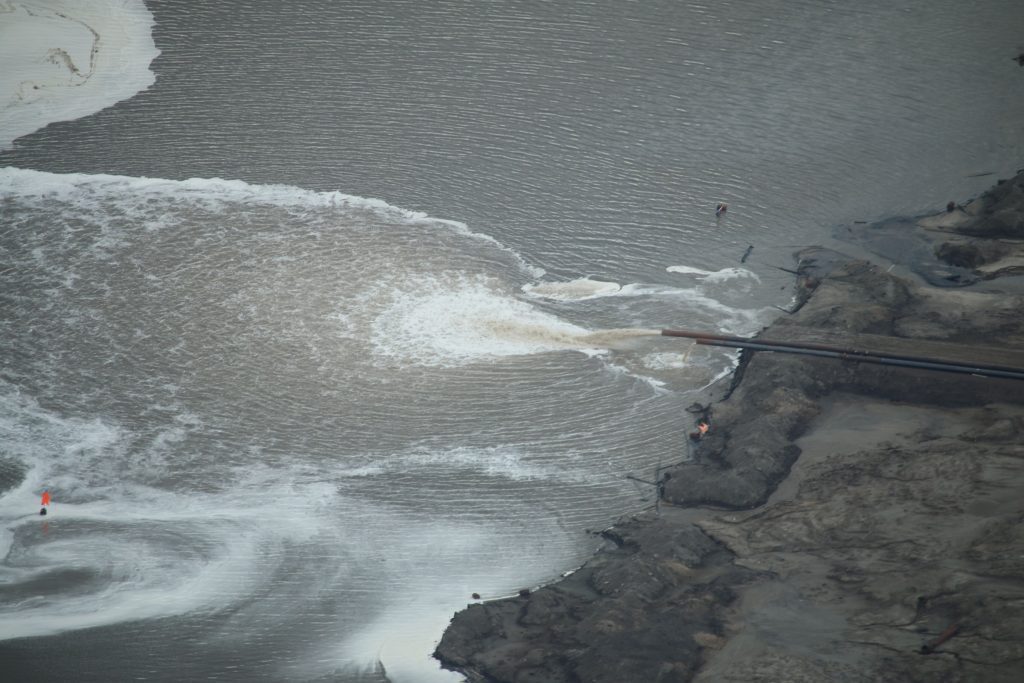The volume of tailings ponds from tar sands development has now exceeded a trillion litres…and growing. That’s the conclusion from recently published research.


Citizens in Alberta and across Canada are rightly concerned. But there’s another aspect of this situation that is arguably worse, especially for First Nations living alongside or downstream from these tailings ponds. Tar sands companies are knowingly allowing toxic chemicals from tailings ponds to leak into local rivers and aquifers – and nothing is being done about it.
Unfortunately, a relatively new Alberta framework to deal with this toxic legacy may be nearly as inadequate as the discredited policy it replaced.
Tailings ponds – a sludge-like mix of water, sand, silt and petrochemical waste products – contain a number of toxic chemicals, including five of the World Health Organization’s ten chemicals of major public concern. In effect, carcinogens such as arsenic and benzene and chemicals that impair development such as led and mercury are leaching into local rivers.


The federal government cannot claim ignorance. The federal Commissioner of the Environment and Sustainable Development has reported on this problem twice since 1999. The National Energy Board also stated in 2004 that “the scale of the [leaking tailings ponds] problem is daunting.” And in 2009, the deputy minister of Environment Canada wrote a memo to the Minister about tailings ponds leaking into aquifers and surface water.
Nine years ago, Environmental Defence estimated the volume of toxic tailings leaking into nearby rivers at 11 million litres per day. That estimate was arrived at by compiling company data from environmental assessment reports. Documents showed that tar sands companies such as Suncor, Shell, and CNRL all knew that their tailings ponds were leaking.
Since then, several academic studies have found elevated concentrations of toxic chemicals in nearby rivers. Then, in 2014, government scientists published research showing that the toxic chemicals in rivers have the “fingerprint” of tailings ponds. But still federal regulators have done nothing to prosecute the companies under the federal Fisheries Act for illegally discharging chemicals into fish-bearing rivers.


That’s why Environmental Defence, Natural Resources Defense Council, and a person from the Dene First Nation submitted a case to the Commission for Environmental Cooperation (CEC) concerning the Canadian government’s failure to enforce the Fisheries Act. The CEC is an environmental body set up by the three NAFTA countries to investigate whether those countries are upholding their environmental laws. Citizens can bring evidence that environmental laws are being ignored and the CEC will investigate.
So that’s what we did, and in August, our case cleared the first hurdle. The CEC ruled that there was merit to our submission and asked the Canadian government to respond to the evidence that we provided that tar sands companies were violating the Fisheries Act by allowing tailings ponds to leak into rivers and aquifers. The government has 30 days to respond, so we will know in September whether this issue will start to be taken seriously.
After that, there are several directions the case could go, including the CEC doing a deep investigation into the issue. Unfortunately, another possible outcome is for the federal government to shut down an investigation by convincing another NAFTA country to vote with them to terminate the case.
Let’s hope that doesn’t happen here. In fact, it would be even better if the Canadian government proactively developed a strategy for enforcing the Fisheries Act against tar sands companies and used the ample evidence it has to prosecute them. First Nations that rely on both fish and fresh water from these rivers should not have to wait decades more for this toxic legacy to be addressed.
UPDATE: The Canadian government requested an extension (from 30 working days to 60 working days) to respond to our submission on this case. The Commission for Environmental Cooperation granted this extension. So the final deadline for the federal government is now November 10th. Stay tuned.







